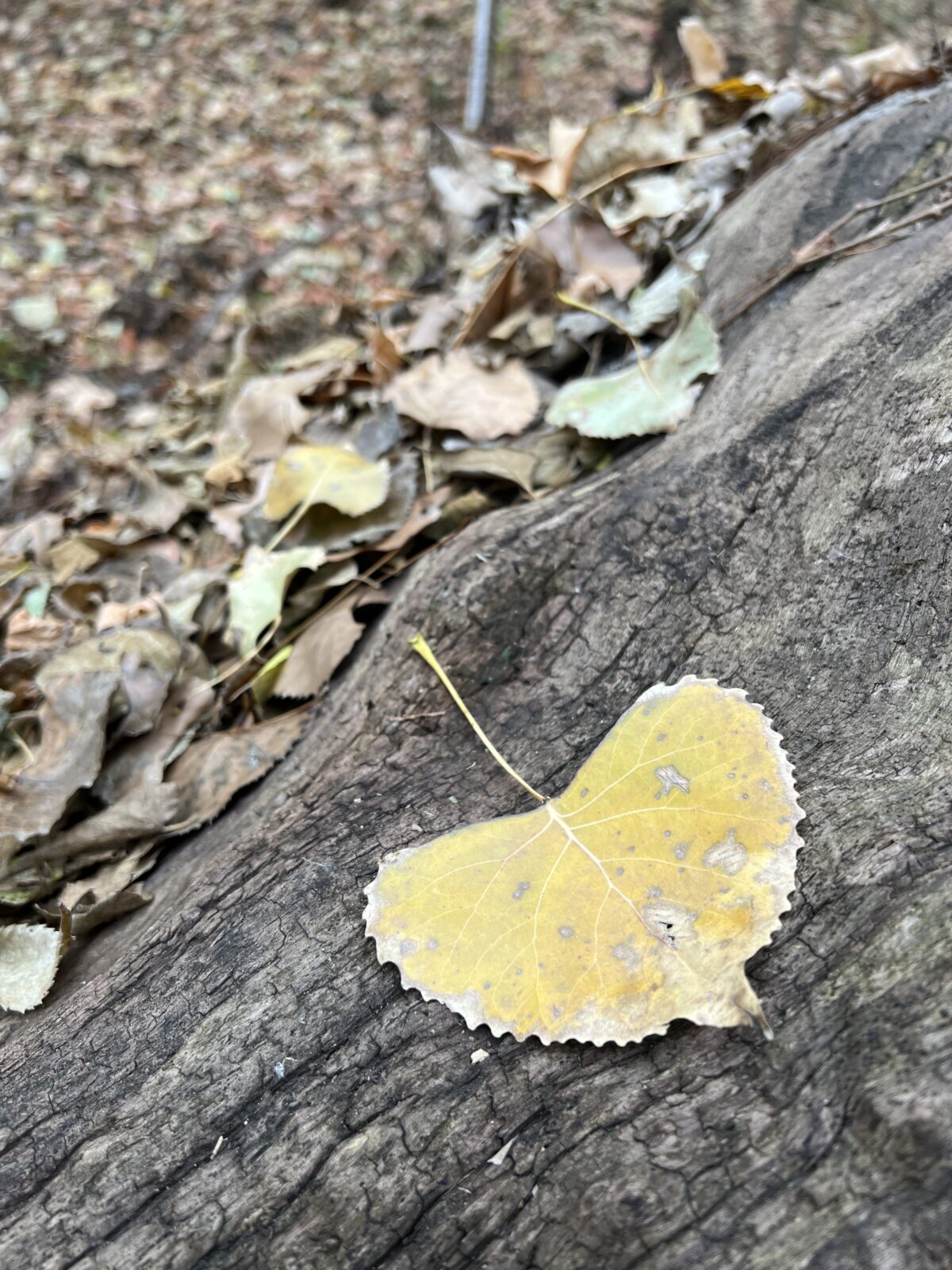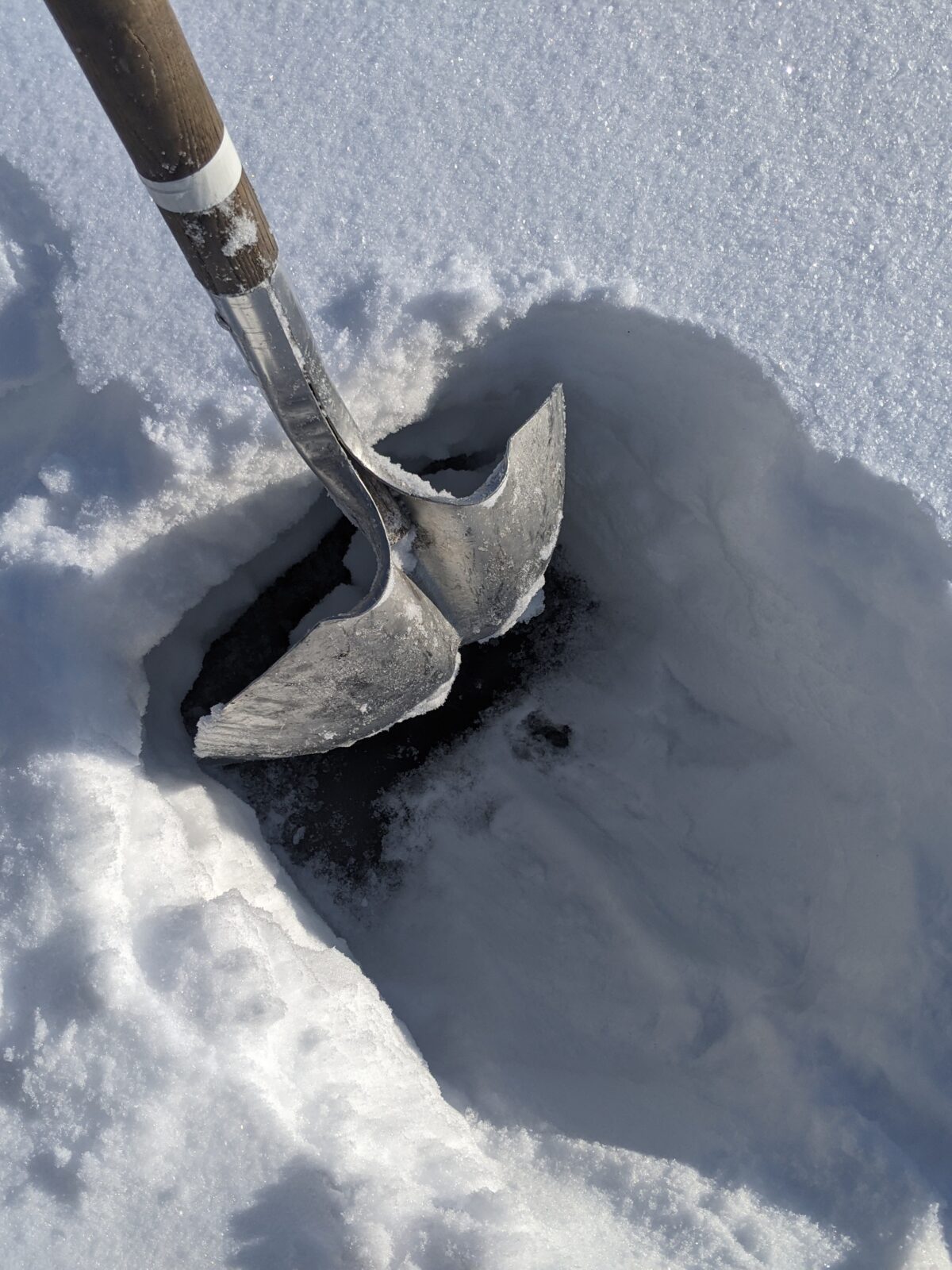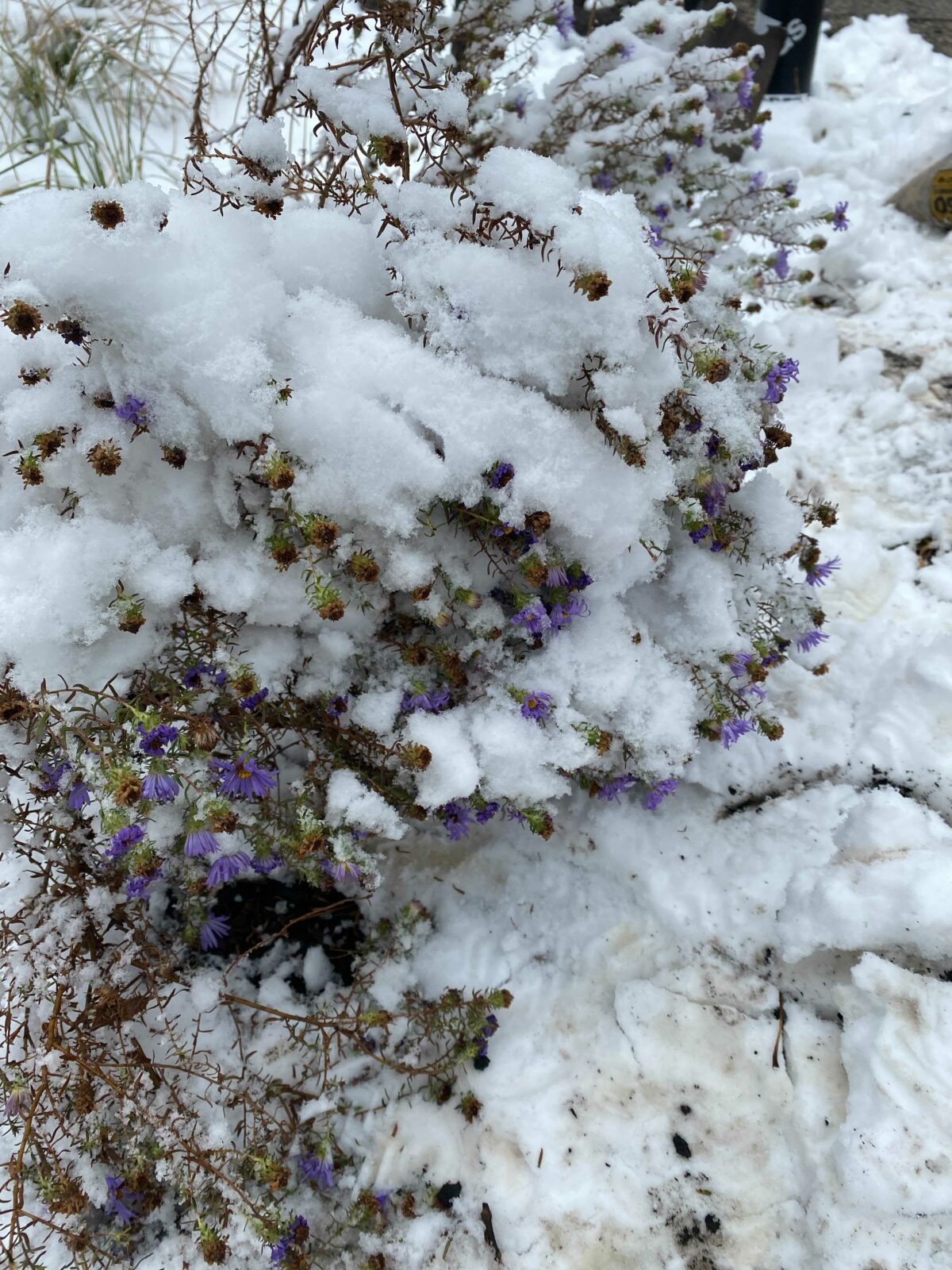
Late autumn in the pollinator garden is bittersweet. As flowers fade into shrunken seed heads and trees drop vibrant carpets of leaves, a silence settles in the air. Summer’s buzz of activity has subsided, but wildlife still stirs, hunkering down for the long winter ahead. We can make it easier for overwintering pollinators to survive the colder months by taking a few actions right in our yards.
Where do they go?
Minnesota’s wildlife copes with winter in many fascinating ways. For some bees like the rusty patched bumblebee, the queens bury themselves under a few inches of undisturbed soil to hibernate before starting colonies again in the spring.
While monarch butterflies migrate south, other insects stay here, slowing down their bodies to preserve energy. Some overwinter as larvae, often within a cocoon or chrysalis, while sheltering under leaf litter. The larvae of stem-nesting bees develop within the hollows of dead flower stalks. Rodents will tunnel under the snow for warmth, and some frogs can adjust their bodies to survive freezing temperatures while burrowed under mud.
What can you do?
A little preparation before the first big snow gives pollinators a boost to make it to spring:
 “Leave the leaves.” Don’t be afraid of keeping your yard a little messy this fall. It’s often that by doing less, we help pollinators more. Instead of bagging up leaves that fall on your lawn or street, move them to garden beds and under trees where they can provide essential shelter for insects. As the leaves decompose, they’ll release nutrients your plants can use as food the following spring!
“Leave the leaves.” Don’t be afraid of keeping your yard a little messy this fall. It’s often that by doing less, we help pollinators more. Instead of bagging up leaves that fall on your lawn or street, move them to garden beds and under trees where they can provide essential shelter for insects. As the leaves decompose, they’ll release nutrients your plants can use as food the following spring!
Keep some soil uncovered. Keeping some of your soil bare or sparsely vegetated will help ground-nesting bees like the rusty patched bumblebee find nesting habitat. Bonus points if the area has loose, well-drained soil in a sunny location!
Save stems and snags. Leave dead stems standing and let them decompose naturally. If you do want to cut back your stems a bit, try to keep at least 18 inches standing. Keep dead flower heads out, as well—seeds from native perennials like coneflowers, Joe Pye weed, and black-eyed Susans help feed birds through the winter. Snags (dead trees and stumps) also provide overwintering habitat for insects and attract foraging birds.
Share some snacks. Birds benefit from feeders and trees or shrubs that bear berries and nuts. Hawthorne, buffaloberry, and highbush cranberry are native plants with fruits that persist through the winter. Nuts from trees like oaks, walnuts, and hazelnuts support small mammals like chipmunks and squirrels. If you’re working with a larger area of land, you can plant a wildlife-friendly winter cover crop. Adding a heated bird bath to your yard provides animals with a source of accessible fresh water.
Winterizing your garden
Giving your plants some extra attention in fall can help them survive the winter and be ready to provide pollinators with blooms in spring:
Plan with winter in mind. If you’re thinking about starting or expanding a pollinator garden, prioritize native perennials that are adapted to survive Minnesota’s harsh winters. Notice the wintertime patterns of sun and shade in your yard and choose plants that prefer those conditions. Include species that bloom early and late in the growing season to provide forage for pollinators when other food sources are sparse. Avoid planting in areas with poorly drained soil, low spots that create frost pockets, and sites that experience rapid fluctuations in temperature.
 Water and mulch. If it’s been a dry autumn, give plants a deep soaking before the ground freezes so that the entire root system can have access to water. Adding several additional inches of mulch to your planting can help retain moisture and protect roots, especially for new perennials and transfers. You can add hardwood mulch and other organic material like leaf litter or straw once the ground is frozen and nighttime temperatures are below freezing. When freeze-thaw cycles in early spring have passed, you can remove the layer.
Water and mulch. If it’s been a dry autumn, give plants a deep soaking before the ground freezes so that the entire root system can have access to water. Adding several additional inches of mulch to your planting can help retain moisture and protect roots, especially for new perennials and transfers. You can add hardwood mulch and other organic material like leaf litter or straw once the ground is frozen and nighttime temperatures are below freezing. When freeze-thaw cycles in early spring have passed, you can remove the layer.
Tend to your trees and shrubs. Prune your trees and shrubs so that branches are not weighed down by ice and snow. The best time of year to prune for most trees and shrubs is late winter to early spring. Avoid pruning in late summer, as this stimulates new growth and depletes plants of nutrients. To remove snow buildup from tree branches, sweep upward with a broom to lift the snow off. Remove snow on warmer days when branches are not frozen. UMN Extension shares more winter tree protection tips on their website.
Limit exposure to de-icing salts. De-icing salts pollute water and damage plants. Shovel, scrape, and sweep snow to avoid icebuildup, and avoid piling snow with de-icing salt into garden beds. Our blog post from last winter covers more tips and techniques for reducing your salt usage in winter.
Even though Minnesota’s native flora and fauna are resilient, extending a helping hand through the winter helps us deepen our relationship with them. Tending to our outdoor spaces in the colder months can open us up to a whole new side of the plant and animal life that resides here. What will you notice this winter?
Resources:
- Sign up for the free Resilient Yards Online Learning Series
- Explore Blue Thumb’s Year-Round Guide to Yard Care
- “Smart Salting for Native Plantings” Blue Thumb blog post
- “Help Tuck Pollinators into Bed for the Winter” blog post from Metro Blooms
- “How do insects survive winter?” blog post from Three Rivers Park District
– Megan Reich, Metro Blooms Communications and Program Manager

